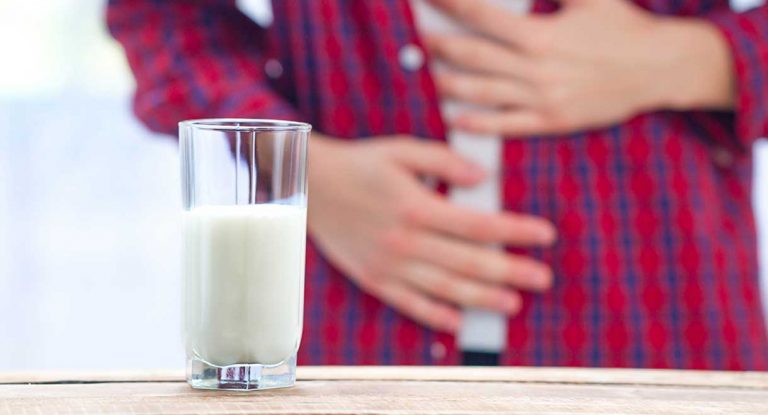
Lactose intolerance (LI) is the most common problem worldwide that limits dairy products intake. It is caused by the inability to digest lactose-containing foods. Lactose is a disaccharide, made up of two smaller sugar molecules, glucose and galactose that must be split by an enzyme named lactase, in order to be absorbed from the small intestine. Due to a genetic defect, the activity of this enzyme is reduced or even absent which results in lactose malabsorption or lactose intolerance. About 75% of the world’s population suffers from this condition.
The symptoms of lactose intolerance are often similar to allergy to cow’s milk and can be confused with “milk allergy”. There are important differences between lactose intolerance and milk allergy. In fact, milk allergy is an immune response, but lactose intolerance is a gene expression defect.
Causes of lactase intolerance
-
Congenital lactase deficiency
-
Primary lactose intolerance or lactase deficiency in adults
-
Secondary lactase deficiency
Causes of secondary lactose intolerance
-
All pathologies of the small intestine can cause a decrease in lactase.
-
Celiac disease
-
Bacterial growth and Crohn’s disease
-
Abdominal radiotherapy or chemotherapy
Symptoms of lactose intolerance
-
Bloating
-
Nausea
-
Increased intestinal motility
-
Diarrhea
Extraintestinal symptoms such as
-
Headache
-
Confusion
-
Memory loss
-
Lethargy
Diagnosing lactose intolerance
-
Lactose Tolerance Test
-
Hydrogen Breath Test
-
Stool acidity test
-
Lactose respiration test (LBT)
-
Genetic test
Medical nutritional therapy for lactose intolerance
In patients with secondary lactose intolerance, treating the underlying disease might restore lactose digestion ability. However, other types of lactose intolerance are not curable since they are a genetic condition.
The main treatment for lactose intolerance is to reduce lactose containing foods and drinks in the diet. Still, patients do not need to eliminate dairy products from their diet entirely. The degree of lactose malabsorption varies widely among patients and each patient must determine their individual threshold for consuming milk. Most of patients can consume up to 250ml of milk daily, if consumed in small servings with other foods.
Key nutrients such as calcium, vitamins A and D, riboflavin, and phosphorus are provided by the dairy products and prolonged avoidance of milk can result in calcium and vitamin D deficiency. Therefore, taking calcium and vitamin D supplements or drinking lactose reduced milks are necessary to help patients meet their daily nutrient requirements.
Lactase enzyme supplements are safe and well tolerated products, available as tablets or drops, that may be beneficial to patients with mild lactose intolerance. However, these products might not completely relieve the symptoms and should be an adjunct to dietary restriction not a substitute.
Probiotics available in some dairy products and supplements, are living organisms that can improve or restore the intestinal flora. There is evidence that they may alleviate lactose intolerance symptoms by increasing hydrolysis of lactose.
Patients should be aware of foods and beverages that contain unrecognized lactose. Milk and milk products may be added to canned, frozen, packaged, and prepared foods. Be aware of many products that may contain lactose; as:
-
Bread and other baked goods( such as pancakes, biscuits, cookies, and cakes)
-
Processed foods, including breakfast cereal, instant potatoes, soups, margarine, salad dressings, and flavored chips and other snack foods




